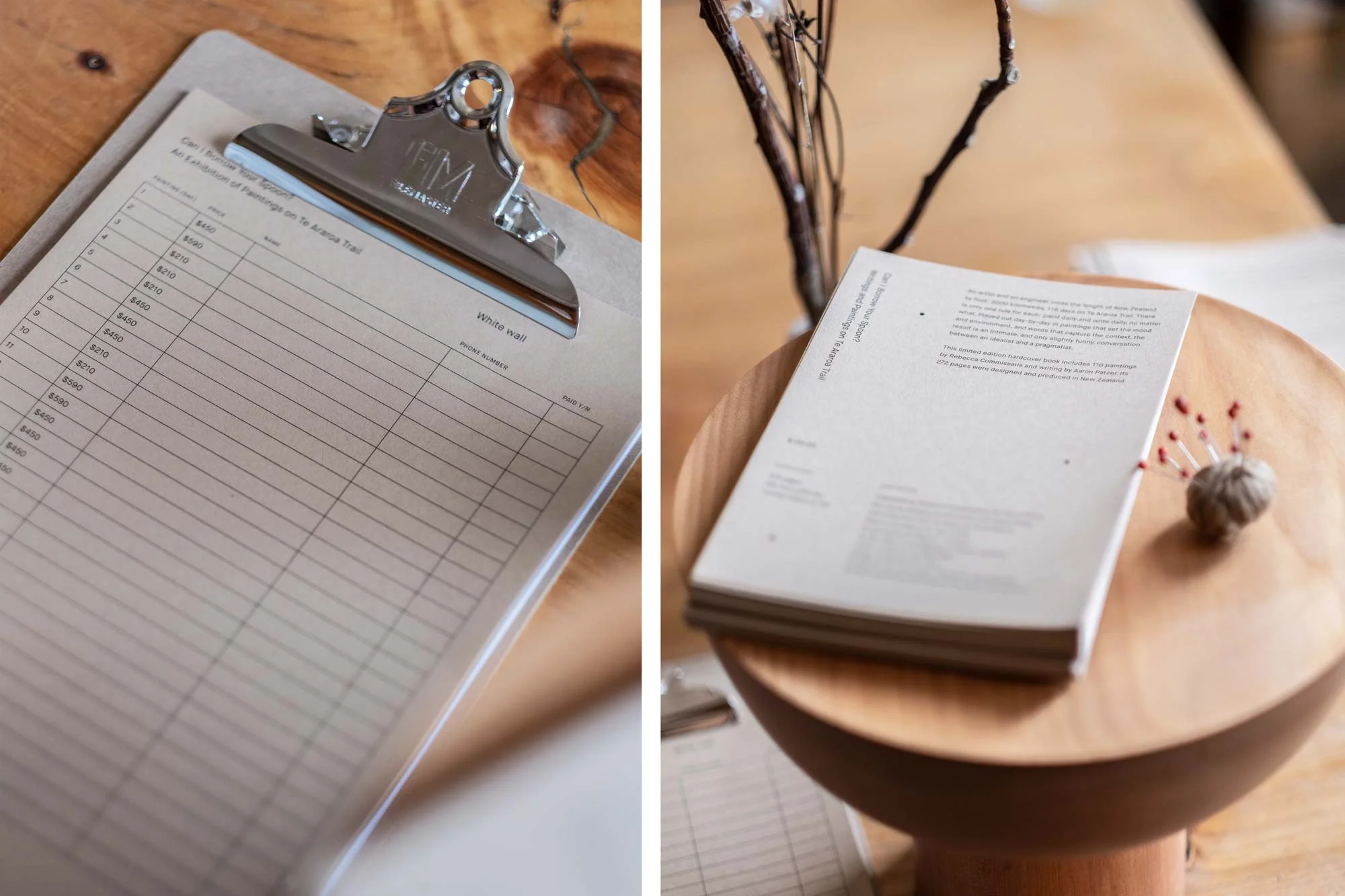
Can I Borrow Your Spoon?
Can I Borrow Your Spoon? is a 272-page book and exhibition of paintings and writings by Rebecca Commissaris and Aaron Patzer. The book follows the artist’s 3000km journey on the Te Araroa Trail and includes 116 paintings and texts produced over four months on the path.

Can I Borrow Your Spoon? is a 272-page book and exhibition of paintings and writings by Rebecca Commissaris and Aaron Patzer. The book follows the artist’s 3000km journey on the Te Araroa Trail and includes 116 paintings and texts produced over four months on the path. Read more on the process of making the book at the bottom of this page.
215x250mm hardcover with fabric and silver foil debossing. 272 pages, 150 copies produced.













“In the creative world, the twin to 'meaning' is 'perfection'—something 100% honest, complete and self-evident. How many retries and edits, how much self-reflection and self-criticism does that take? To an artist, all the world is interconnected, and everything—all the details—matter.”
—Prologue from Can I Borrow Your Spoon?, 2019
An artist and an engineer cross the length of New Zealand by foot: 3000 kilometres, 116 days on Te Araroa Trail. There is only one rule for each: paint daily and write daily, no matter what. Played out day-by-day in plein-air paintings and insightful storytelling, this book relays an intimate conversation between an idealist and a pragmatist.
Can I Borrow Your Spoon? is about developing process and cultivating craft outside the limitations of society. Two years later, back in the city, the same approach was applied to the production of the 272-page hardcover book. A collaboration between a book designer and the artist, this project was an exercise in refining the process of bookmaking as a craft.
A limited edition of 150, the book was intended to be as much of a work of art as one of the paintings. Both the designer and the artist were invested in elevating the publication’s design and materiality through thorough investigation into form. From the headband to the page numbers, every component of the book was highly considered as representation of the story, its location, and the values of its makers.
Process and craft was our incentive. When designing the maps, an academic specialist was consulted to ensure best practice was utilised in representing the trail in cartographic form. Typography was carefully applied as a modern counter to the conservative convention of watercolour painting. Colour was derived not only from the landscapes traversed, but from the cultural context of local tramping, inspired by a historical collection of ephemera. The foil on the cover specifically references the silver of a camping spoon.
Materials were chosen with the purpose of leaving little environmental impact. The book is almost entirely plastic-free—unfortunately, after many trials, the binder was unwilling to guarantee linen thread over polyester thread and we had to compromise sustainability for quality. We pushed local printers and binders to their limitations in our quest for quality—there were no less than 26 test prints made to ensure the colour of the pages was correct.
With the notion of craft comes the promise of time—this publication was not to be rushed. If it wasn’t for the deadline of a Masters at Yale beginning in July, this project may have continued to be refined until ne plus ultra could be achieved.
However, like the trail, an end was imminent. The launch and exhibition took place at Orphans Kitchen, where the paintings were framed in native timber from the work's location and a chef-curated menu evoked camping food. The exhibition materials, right down to the spreadsheets, were designed in the style of the book. It was a fitting conclusion for a project where all the details matter.
